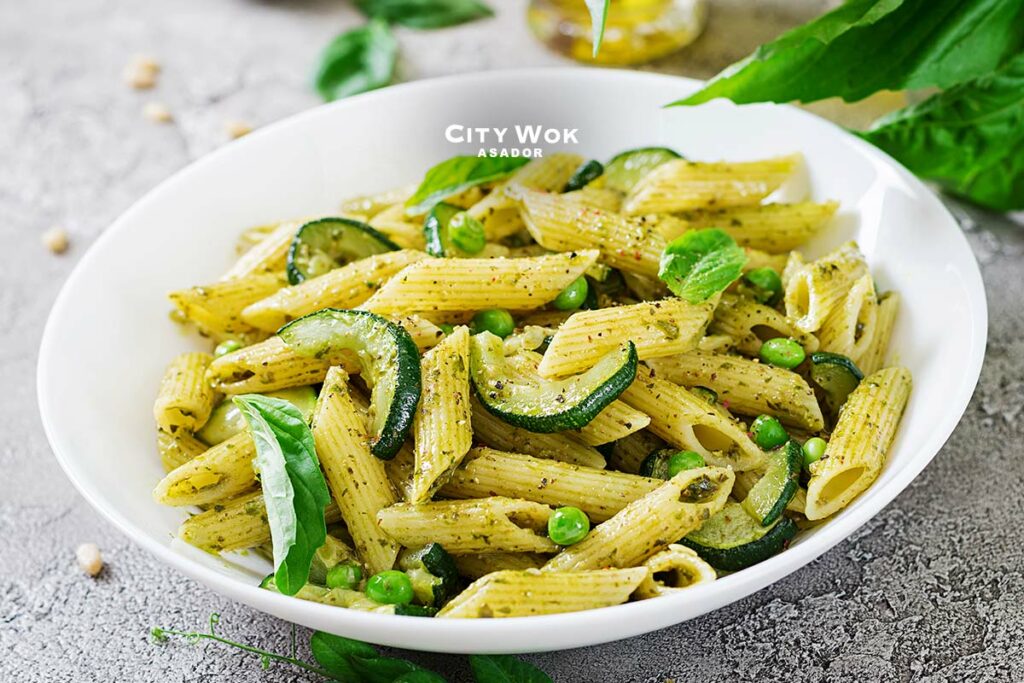5 recetas vegetarianas con pasta para chuparse los dedos

Entre los platos preferidos de aquellos que siguen una dieta vegetariana, se encuentran aquellos que contienen pasta. Lo cierto es que existe una cantidad inimaginable de formatos de pasta, además de brindar un sinfín de posibilidades para realizar platos casi que con cualquier ingrediente. En este artículo te recomendaremos cinco recetas vegetarianas hechas con pasta que puedes probar, ¡y están deliciosas!
Conoce algunos de los tipos de pasta más populares
Antes de mencionar las recetas vegetarianas que puedes preparar con pasta, es importante conocer los tipos de pasta que existen, ya que hay ciertos formatos que son más aptos para un tipo de salsas o condimentos que otros. Aunque cuando se trata de pasta, ¡poco importan las normas!
Dado que entre la comunidad vegetariana los hay que consumen productos como huevos y quesos, mientras que otros prefieren abstenerse, hablaremos de los dos grandes tipos de pasta fresca: La pasta fresca simple y la que está hecha con huevo. Para consumir cualquiera de los dos tipos de pasta primero debe elaborarse la pasta propiamente dicha, a partir de harina y, dependiendo del tipo que elijamos, se le añadirá huevo o sémola y agua.
Sin embargo, existe otro gran tipo de pasta, conocido como pasta seca. Este tipo es el de consumo más habitual en el hogar y el que se vende en las grandes superficies, como supermercados o comercios locales. La pasta seca es sometida a técnicas de secado para poder conservarla durante más tiempo. Teniendo esto en cuenta su técnica de cocinado es diferente a la de la pasta fresca. Sin ir más lejos, el tiempo de cocción es diferente entre una y otra, puesto que la pasta seca requiere entre 8 y 10 minutos para estar lista, mientras que la pasta fresca tan solo necesita 3 o 4 minutos de cocción.
Entre los formatos más habituales que pueden encontrarse para un tipo y otro están los lazos, los macarrones, los nidos, tortellini, raviolis, fideos, spaghetti y la lasaña.
Recetas vegetarianas hechas con pasta
Como hemos comentado antes, una de las grandes ventajas de la pasta es que es compatible con casi cualquier ingrediente, además de la sencillez con la que se pueden elaborar suculentos platos. Aunque pueden prepararse recetas a partir de ingredientes naturales sin añadir productos de origen animal, cabe destacar que existen alternativas veganas y vegetarianas a este tipo de ingredientes.
A continuación, te proponemos cinco recetas vegetarianas hechas con pasta que puedes preparar en muy poco tiempo:
Tortiglioni con coles de bruselas y col negra
Aunque también existen otras combinaciones deliciosas con tortiglioni, como puede ser el calabacín y el tomate.
Pasta con pesto
Aunque hay diversas formas de preparar el pesto, como por ejemplo en su versión más clásica hecha a partir de albahaca, ajo, queso parmesano y piñones o el elaborado con rúcula y pistacho. Lo cierto es que cada vez más -especialmente los vegetarianos- recurren a esta salsa para condimentar su plato de pasta. Puedes preparar un sinfín de recetas, como el mítico plato de pasta o una ensalada.
Lasaña vegana
Se elabora con boloñesa hecha a partir de lentejas, bechamel vegana, queso y pasta. Recuerda que en caso de no querer consumir ningún tipo de producto de origen animal, tienes opciones de queso vegano hechos a partir de soja y tofu. Pero no te preocupes, ¡no notarás la diferencia!
Pasta con crema cannellini
Quizá nunca hayas oído hablar sobre este tipo de salsa. Aunque pueda parecer una salsa de ingredientes extraños y difíciles de encontrar, la crema cannellini no es más que un preparado a partir de judías blancas.
Pasta a la carbonara vegana
Como no hay nada más italiano que una pasta a la carbonara, no podía faltar en esta recopilación. Pese a lo que pueda parecer, lo cierto es que la auténtica salsa carbonara no se prepara con nata, sino con yemas de huevo, queso parmesano y aceite.
Estamos seguros de que te ha entrado el gusanillo y estás deseando probar un buen plato de pasta. En Asador City Wok Málaga ponemos a tu disposición una amplia variedad de productos con los que puedes hacer tus combinaciones preferidas. Con nuestro servicio de buffet libre desde luego que no te quedaras con las ganas. Recuerda que nuestro equipo de cocineros profesionales está ahí para aconsejarte y recomendarte la salsa ideal para tu plato.
Asador City Wok Málaga es un buffet libre de cocina Argentina, mediterránea, mandarín y muchas más opciones que te aproximan a la gastronomía de todo el mundo. Reserva tu mesa y disfruta de una fantástica experiencia gastronómica con una buena compañía.